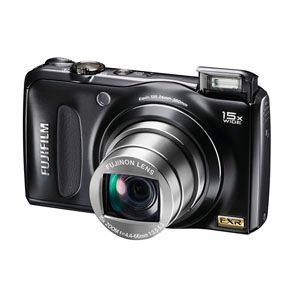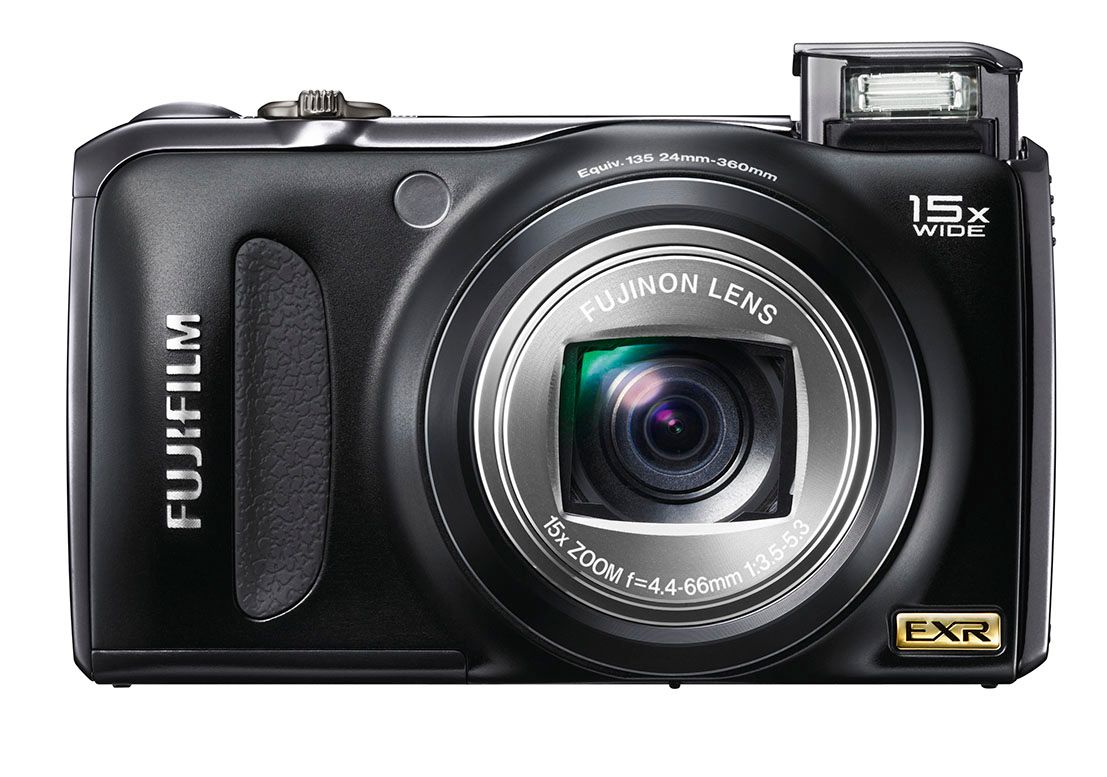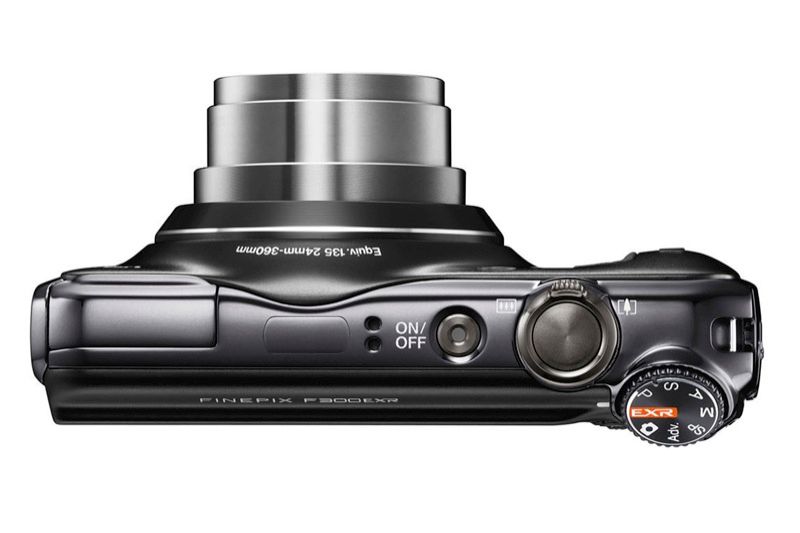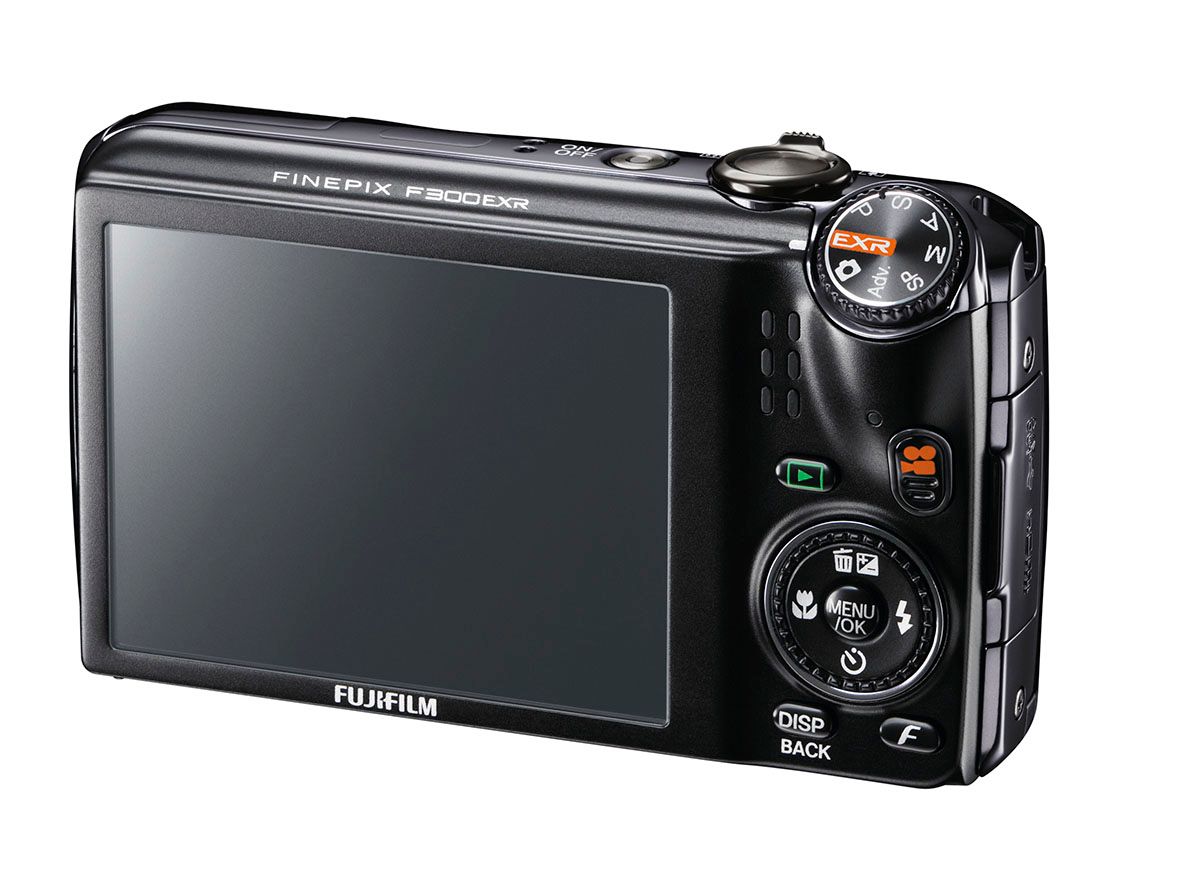The 12 megapixel, 1/2-inch triple action Super CCD EXR sporting F300EXR from Fujifilm is a handsome beast. Remarkably so, as it shoehorns a class leading 15x optical zoom into a chassis that will slip as easily into trouser pocket as handbag. Cloaked in serious looking matte black the F300EXR weighs a manageable 215g with optional SD or SDHC card plus battery inserted and has proportions of 103.5 x 59.2 x 32.6mm, or 22.9mm at its thinnest point. The lens is tucked away within its housing when not in use.
Our quick take
Though the F300EXR gives a very impressive first impression, the disappointment comes when a critical eye is turned on the actual images it produces. They're a mixed bag and we still struggle to see pronounced benefits from the EXR sensor. The F300EXR struggled with brighter conditions, with burnt out highlights and pixel fringing evidenced between areas of high contrast. Colour wise, we felt the images were a little flat straight out of the camera. Selecting Velvia mode, which matches the warmer results most point and shoot competitors provide on default standard settings, put this right to an extent, but Fuji gets a "could do better" from us.
All said and done though, the creative capability offered by a larger than average zoom in a smaller than average chassis cannot be underestimated. If you're prepared to put up with or work around its shortcomings, then the F300EXR is still well worth checking out.

Fujifilm FinePix F300EXR - 4.0 / 5
| FOR | AGAINST |
|---|---|
|
|
Its broad focal range, equivalent to a wide angle 24-360mm in 35mm film terms - an all-encompassing reach that will take in landscapes, group portraits and candid close ups - pitches it into direct competition with Canon's less self-consciously styled PowerShot SX210 IS. The cost of both cameras is roughly the same, with the Fuji retailing for a suggested £329.99 in the UK. This places it at the top end of the "travel zoom" price scale, although we found it on sale for a more enticing £280.
The proposition is that it's an ideal camera for those on the go who want creative control, a large zoom range and decent image quality. We also get 1280 x 720 HD movie clips, with usefully a dedicated video mode button on the backplate that falls readily under the thumb. There's mini HDMI output alongside regular AV and USB output at one side, so all connectivity bases are covered.
The F300EXR is only slightly broader than your average 3x zoom compact, and the metal elements of its construction ensure it feels reassuringly solid gripped in the palm, even if there is not much in the way of an actual grip. A slender rubber pad to the front and sextet of raised nodules to the back provide minimal purchase for the fingers. The zoom itself is supported by CCD shift image stabilisation, built-in gyro sensors purportedly detecting any external wobble and making compensatory adjustment. It works just as well as the same system does in rival cameras. It's not infallible then, but you'll get a higher proportion of usable results than without. The zoom takes 2 or 3 seconds to work its way through its range and is quite noisy with it. We were surprised then to find it accessible when recording video. The microphone does however pick up some operational and wind noise.
Switch the camera on and it powers up from cold in 2 seconds. The on/off switch glows with a cool blue light, which reminded us of the nigh identical feature seen on Samsung's compact range. Two other things then become apparent. The built-in flash, previously sunk into the top plate, pops up and stays there getting in the way of your thumb, while the shooting mode dial over at the right hand edge appears to be in the process of melting away from the top plate. While the former is rather irritating, the latter is practical, says Fujifilm, the sloping design providing quicker access than had it been vertically placed on the backplate, as per usual. In practice we didn't notice a great deal of difference either way.
In the absence of an optical viewfinder images are composed with the aid of the 3-inch, higher than average 460k-dot resolution wide view rear LCD which swallows up two-thirds of the backplate. The clarity of this screen provides the optical illusion that your images are actually sharper than they appear on your desktop once downloaded.
This model isn't just about good looks however, but innovation too. First off there's that Super CCD EXR sensor at its core, now in its second generation. This is uniquely "switchable" according to Fujifilm, and can be utilised in one of three ways: at full 12MP resolution in High Resolution (HR) mode, in wide Dynamic Range (DR) mode to achieve optimal balance between shadows and highlights, or in Low Noise (SN) mode for shooting in low light without flash conditions.
If you can't decide which is best suited to your purpose, then there's the default option of scene-detecting EXR Automatic Mode. Here the camera compares a given scene with its preset parameters governing landscapes, portraits, macro, night-time, night portrait and backlit portrait settings.
The second talking point here concerns Fujifilm's introduction of phase detection auto focus on the F300EXR. This it says allows for a DSLR-like near instantaneous capture speed, officially given as 0.158 seconds, or the blink of an eye to you and me. Other more fun new features include a new 360° motion panorama mode that will have you spinning on the spot to capture literally the world around you as a single elongated image, the ubiquitous face detection/recognition (now extending to dogs and cats), tracking auto focus, the DSLR-like background blurring Pro Focus mode seen on other EXR compacts and a Pro Low Light mode for less noisy images without the flash (but with the aid of a tripod or steady surface).
Since it doesn't stop there, we soon get the impression that the F300EXR is packing in a lot for the money - if you go by street price rather than SRP. Film simulation modes as a nod to Fujifilm's past make a re-appearance. Thus enthusiasts get a choice of the well-saturated colours of Velvia mode, the default natural-looking setting of Provia, or the soft and gentle Astia, a rather wishy-washy look that recalls 1970s album covers with Timotei-d hair. Plus, in playback mode, there's a chance to sort through images faster with a new Photobook feature, as well as rate your favourites by allocating stars to them, as if you were some sort of critic.
Likely to get more use by those with fiddly young children is an auto release mode that fires the shutter when the camera detects the subject is looking directly at the lens.
To recap
The F300EXR weds a sturdy build and attractive design to a reasonably sophisticated feature set. Its manufacturer's suggested price is too high however, so it pays to shop around, and we feel image quality could be further improved




